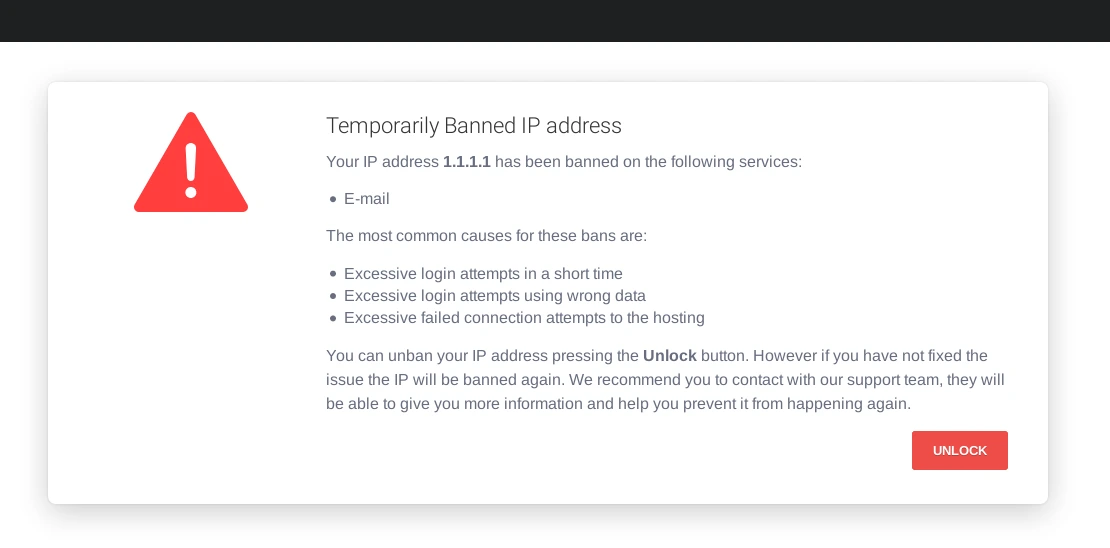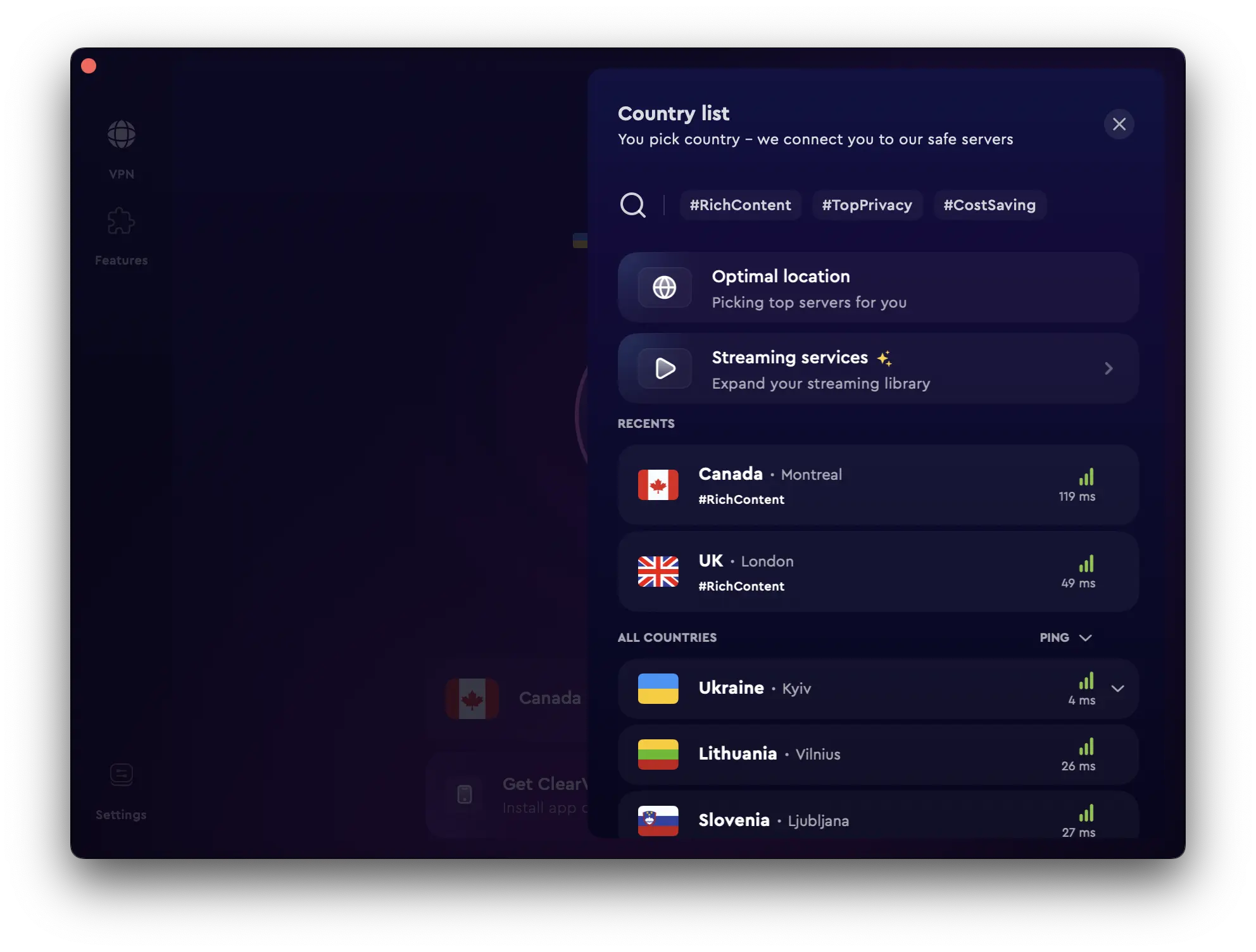There are few things more frustrating than trying to browse the web or complete an important task online, only to find your IP has been temporary blocked message. This can stop your activities dead in their tracks, preventing you from accessing websites and services that you need.
But don’t panic — there are steps you can take to fix the issue and get back online.
Why is my IP address blocked?
Before anything else, it’s important to understand what an IP address is and why it gets blocked.
An IP address (which stands for “Internet Protocol”) is a unique numerical identifier assigned to any device connected to the internet. This includes your computer, phone, tablet, and any other internet-accessing device.
IP addresses are used by websites and services to identify your device and its location in order to provide you with access to content. However, sometimes these IP addresses can be blocked for various reasons, such as:
IP address blocked due to suspicious activity
If a website or service detects unusual activity originating from your IP address, you may get your IP address blocked due to their security measures.
This suspicious activity could include numerous unsuccessful login attempts, rapid succession of page requests, or other patterns that resemble the work of automated scripts or bots.
IP blocked due to blacklisting
Sometimes, an IP address can be blocked because it has been blacklisted. This often happens when an IP address is associated with malicious activities like spamming, phishing, or distributing malware. Security systems and software, like firewalls and antivirus programs, frequently update their blacklists with IP addresses recognized as threats.
If your IP address ends up on these blacklists, you may find yourself blocked from accessing certain sites or services. This can happen if your device becomes infected with malware that conducts such activities without your knowledge, or if you’re using a shared IP address that another user has implicated in such activities.
Geo-blocking restrictions
Geo-blocking – are another reason your IP address may be blocked. It refers to the practice of restricting access to content based upon the user’s geographic location. Geo-blocking is a common practice in a world where content rights and legal restrictions vary drastically between different countries.
Websites and services use your IP address to determine your location. If your IP address is from a country where access ti a site or service is restricted, you’ll find your IP address blocked.
For instance, some streaming services offer different content libraries in different countries, or block access entirely in some regions due to licensing restrictions. Similarly, some websites and online services may be completely inaccessible in certain countries due to local laws or regulations.
IP blocking due to network issues
At times, issues related to your network can lead to your IP being blocked. ISPs (Internet Service Providers) can sometimes block or restrict your IP address due to network congestion, or if they detect harmful traffic originating from your IP.
This could be due to a virus or malware on your device sending out a large number of requests or to some of your online activities that violate your internet service provider’s terms of service. For instance, if you’re found to be hosting a public Wi-Fi network without your ISP’s permission, your IP address could be blocked or restricted.
With an IP blocked because of network issues, it’s often temporary and gets resolved once the issue causing the block has been addressed. However, you may need to contact your ISP and request them to unblock your IP. It’s worth noting that maintaining a secure network and adhering to your ISP’s terms of service is crucial to prevent your IP from being blocked due to network issues.
What to do if your IP address is blocked?
Now that you have a better understanding of the possible reasons behind a blocked IP address, let’s consider what to do if this happens:
Check if you’ve been blacklisted
If you suspect that your IP address has been blacklisted, you can check online by using tools like WhatIsMyIPAddress.com or Spamhaus. These websites provide a list of known blacklists and allow you to check if your IP address is on any of them.
If your IP address is found to be blacklisted, follow the steps provided by the website to request removal from the blacklist.
Contact the website or service
If you’re unable to access a specific website or service, your IP may have been blocked due to suspicious activity or other reasons. In this case, the best course of action is to contact the website’s support team and explain your situation. They may be able to unblock your IP or at least provide further instructions on how to resolve the issue.
Check for malware
If you suspect that your IP address has been blocked due to malicious activities originating from your device, it’s important to run a thorough malware scan using reputable anti-virus software. If any threats are detected, follow the instructions provided by the software to remove them and ensure that your device is secure.
Contact your ISP
If none of the above solutions work and you believe that your IP address has been blocked due to network issues caused by your ISP, it’s important to contact them and explain the situation. They may be able to resolve the issue or provide further instructions.
Use a VPN
If you’re facing geo-blocking restrictions, or if your IP address has been blocked due to network issues, using a virtual private network (VPN) can help you bypass these blocks. A VPN hides your true IP address and assigns you a new one from a location of your choice, allowing you to access restricted content or services.
How to unblock IP address using a VPN
The specific steps to unblock an IP address vary from one service provider to another. However, the general idea is the same: you need to connect to a VPN server and obtain a new, unblocked IP address.
In this section, we’ll lay out the steps on how you can accomplish this with ClearVPN — a fast and secure VPN service that offers access to servers in 45+ countries.
- Install ClearVPN on your device. ClearVPN is compatible with a wide range of devices and operating systems. This includes Windows, macOS, Android and iOS devices. You can get the installer from the ClearVPN website for PC or Mac users. For mobile devices, you can get the ClearVPN app via the Google Play Store or the App Store.
- Create an account and sign in.
- Open the app and click on the locations button at the bottom of the screen.

- Navigate to the list of available servers and choose one where the website or service you’re trying to access is not blocked.

- Now, try accessing the previously blocked website or service. If everything is set up correctly, you should now have unrestricted access.
FAQs
Why do IP addresses get blocked?
IP addresses are blocked primarily for security reasons – to prevent or stop cyberattacks. This can happen if suspicious activity is detected, such as excessive login attempts, spamming, or DDoS attacks. Another reason is geo-blocking, which restricts access to certain content based on location. Network issues or violating an ISP’s terms of service can also lead to blocked IP addresses.
What happens when an IP address is blocked?
When an IP address is blocked, your device is unable to communicate with the server or website associated with that IP. This means you may be unable to access a particular website or online service, or your emails may be rejected by an email server. Essentially, a blocked IP address prevents you from successfully executing the online tasks associated with that IP.
How long will my IP be blocked?
The duration of an IP block can greatly vary depending on the reason for the block. Blocks due to network issues or suspicious activities are often temporary, disappearing once the issue has been resolved or the suspicious activity has ceased. However, blocks due to being blacklisted or geo-blocked are more rigid and require more complex action to resolve.
